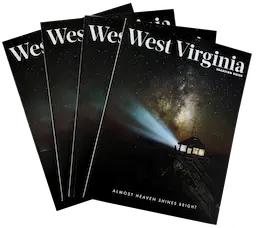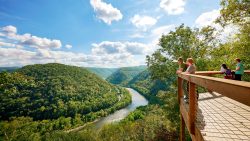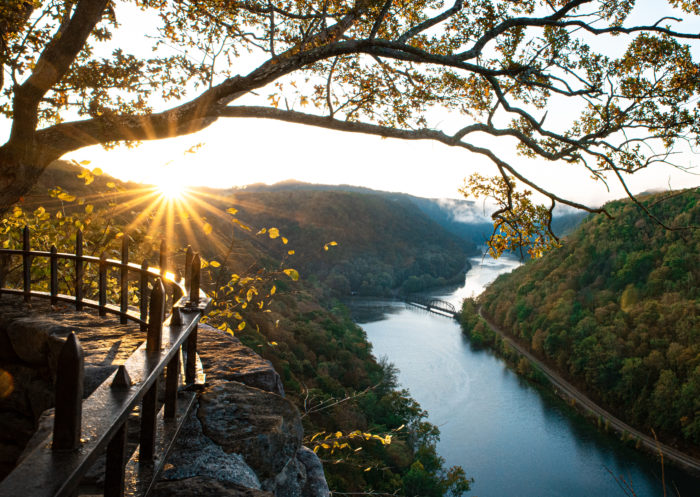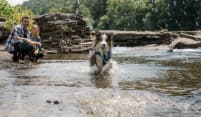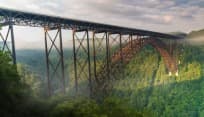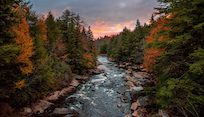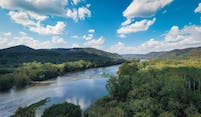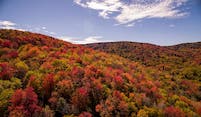6 reasons why West Virginia is out of this world
West Virginia is known for its majestic scenery, outdoor adventures and delicious home cooking. But the Mountain State also boasts a high-tech connection that extends to the farthest reaches of the universe. Here are just a few of the West Virginia people and places who have played a crucial role in space exploration and education:
1. Jon McBride
Retired NASA astronaut Jon McBride’s West Virginia connections run deep. He was born in Charleston, grew up in Beckley and attended West Virginia University before continuing his studies at the U.S. Naval Postgraduate School and Pepperdine University. During his Naval career, he logged more than 8,800 hours of flying time, including 64 combat missions in Southeast Asia. He joined NASA in 1979, serving as lead chase pilot for the 1981 maiden voyage of Space Shuttle Columbia.
Not one to rest on his laurels, McBride spends his retirement days at Kennedy Space Center participating in educational meet-and-greets with visitors and working on improvements to the Shuttle Launch Experience simulation ride.
McBride’s influence on West Virginia is evident at the NASA Independent Verification and Validation Facility (IV&V) in Fairmont, which named a laboratory after him. The Jon McBride Software Testing and Research Laboratory (JSTAR) is dedicated to the critical assessment of mission safety software.

2. NASA’s Independent Verification and Validation (IV&V) Facility
NASA’s Independent Verification and Validation Facility (aka IV&V Program) in Fairmont was founded in 1993 under the NASA Office of Safety and Mission Assurance in the aftermath of the Space Shuttle Challenger accident. Through its efforts to provide safe and reliable software to the International Space Station, the Space Shuttle Program and other missions, the IV&V program has contributed to NASA’s improved safety record.
The IV&V Program plays a major role in West Virginia’s economy and education, employing approximately 300 people and providing internship opportunities to high school and college students in the STEM (science, technology, engineering and math) fields.
A grant provided by Fairmont State University helps fund the IV&V Program Educator Resource Center, which serves 1,000 state educators and 10,000 students annually by providing resources, training opportunities and hands-on STEM kits. The ERC also welcomes more than 2,000 youth every year for on-site workshops in robotics, rocketry, aviation and other STEM fields, and sponsors student STEM competitions in robotics and aviation.
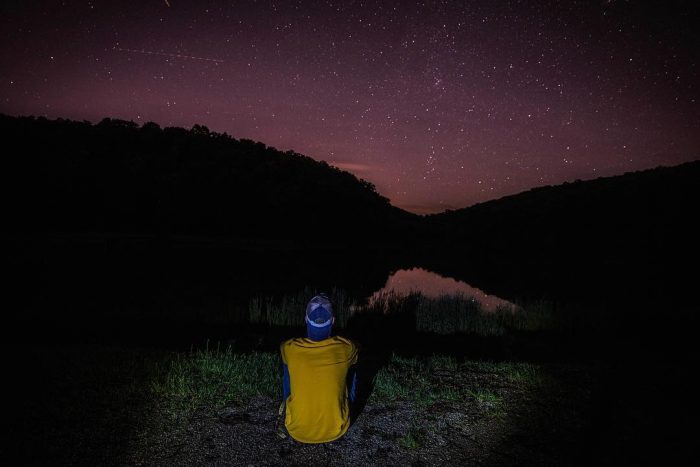 3. Katherine Johnson
3. Katherine Johnson
White Sulphur Springs native Katherine Johnson, a graduate of West Virginia Colored Institute (now West Virginia State University) made history as one of three African-American women whose mathematical skills helped NASA win the space race against the Soviet Union. Johnson was part of a team of female “computers” hired in the 1950s to calculate launch trajectories. She worked on the missions of Alan Shepherd, the first American in space, and John Glenn, who became the first American to orbit the earth. She also performed calculations for the 1969 Apollo 11 flight to the moon and for numerous missions of the Space Shuttle program until her retirement in 1986.
In 2015 she was awarded the prestigious Presidential Medal of Freedom. Her work was further recognized following the release of the 2016 New York Times best-seller “Hidden Figures: The American Dream and the Untold Story of the Black Women Who Helped Win the Space Race” and the Box Office smash film, “Hidden Figures.”
4. West Virginia Space Grant Consortium
The West Virginia Space Grant Consortium is a NASA program established 1991 to build research infrastructure and promote STEM education in the Mountain State. Based out of WVU in Morgantown, WVSGC consists of 12 West Virginia academic intuitions and 9 corporate and scientific partners.
WVSGC funds grants for research and development, sponsors college internships and supports K-12 educators in designing and implementing STEM projects such as robotics competitions and forensic science labs for students.
Among those the program has benefited is Xploration Outer Space host Emily Calandrelli, who counts WVSGC among several influencers and educators who made the greatest impact on her career with their guidance on course subjects and assistance with finding scholarships, internships and fellowships in the STEM fields.

5. Emily Calandrelli
When she was growing up in Morgantown, Emily Calandrelli discovered she had a natural affinity for math and science. This led her to pursue studies in the traditionally male-dominated fields of mechanical and aerospace engineering. With a bachelor’s degree from West Virginia University, two master’s degrees from Massachusetts Institute of Technology, and two NASA internships under her belt, she set out on a mission to make science and space more accessible to everyone—an accomplishment that earned her an Emmy nomination. Calandrelli is host and producer of Xploration Outer Space, a syndicated TV show that presents space travel and STEM concepts in a fun and easy-to-understand way.
Calandrelli also has served as chief correspondent on the Netflix show “Bill Nye Saves the World,” and is the author of two children’s books about an 8-year-old girl who uses her technology skills to solve mysteries. In November 2017, she returned to WVU for a stint as scholar-in-residence as part of the yearlong celebration of the 2017-2018 Campus Read book selection, “Hidden Figures.”
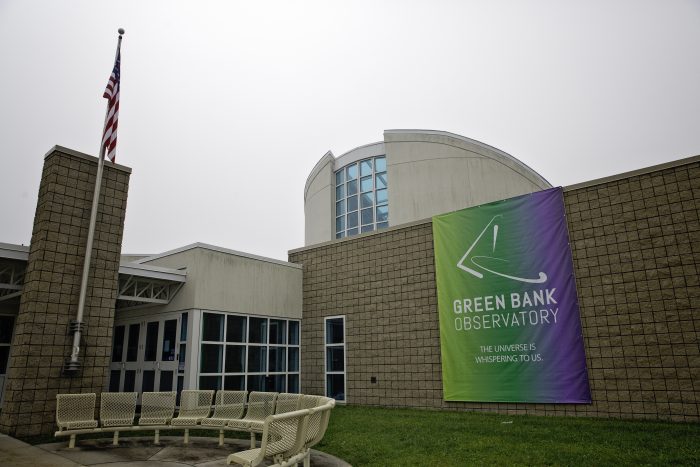 6. Green Bank Observatory
6. Green Bank Observatory
The massive dish of the Robert C. Byrd Green Bank Telescope (GBT) is a magnificent sight rising from the farmlands of Pocahontas County. Fittingly, it takes a big telescope to take on a big project. The world’s largest fully steerable radio telescope is part of Breakthrough Listen, a $100 million international search for intelligent extraterrestrial communications in the universe. The telescope scans for radio signals in the range of 1 to 10 GHz, a “quiet zone” where radio waves are unobscured by cosmic sources or the earth’s atmosphere.
The Green Bank Observatory welcomes visitors for free tours of the facilities. Tour groups will watch a short film about the GBT and learn about radio astronomy through science demonstrations and displays before boarding a bus to the RFI-restricted zone for an up-close look at the observatory’s telescopes. The observatory also hosts public events like the popular Star Party, in which visitors can enjoy telescopic views of the planets, star clusters, nebulae and distant galaxies for a truly “far-out” experience.
What other connections does West Virginia have to space?
This post was last updated on March 17, 2022
